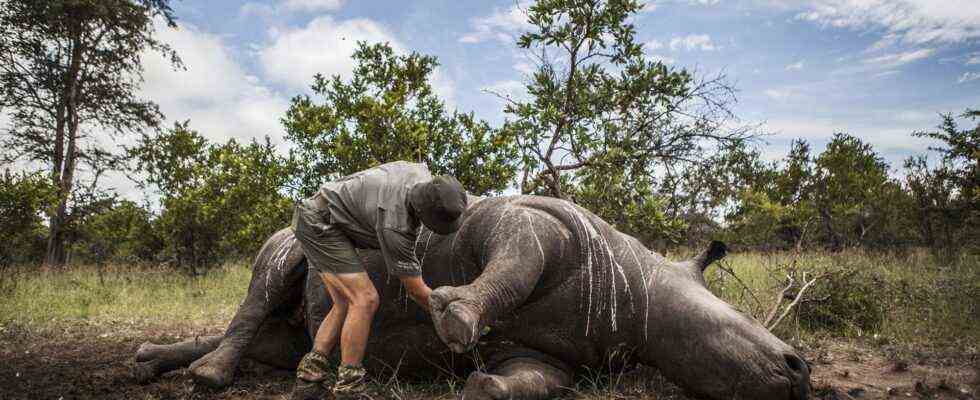As of: 08/01/2021 3:57 a.m.
The easing of the corona measures in South Africa also has consequences for the rhino populations in the country: During the strict lockdown last year, poaching declined. Now more animals are dying again.
Rhino poaching is increasing again in South Africa. According to Environment Minister Barbara Creecy, a total of 249 rhinos were poached from January to the end of June. That is at least 83 more than in the same period last year. In the Kruger National Park, which is popular with tourists, 132 rhinos have already been killed this year.
“Although the number of rhinos killed for their horns is higher than the 166 in the same period of the previous year, it is fewer than the 318 poached rhinos in the first six months of 2019,” said the national park authority Sanparks on. The previous year is considered an exceptional year due to one of the world’s strictest corona lockdowns in South Africa.
In the Kruger National Park alone, with 715 poaching incidents, almost four percent more activities were registered than in the same period last year (689 cases). A total of 125 people across the country have been arrested for poaching or smuggling rhinoceros horn – 20 of whom have already been convicted. “In the fight against poaching and to protect our wildlife, our rangers stay on the front lines and risk their lives every day,” said Creecy.
Black market prices of up to 55,000 euros
The Kruger Park is one of the main tourist attractions in the country and is one of the largest national parks in Africa. It was established as a protected area on March 26, 1898 by then President Paul Kruger before it was renamed Kruger National Park in 1926. It is about the size of the state of Hesse and is known for the large number of wild animals such as elephants, lions, rhinos, leopards and buffalo.
Almost 80 percent of all rhinos worldwide live in South Africa. The poachers are concerned with the animals’ horns, which on the black market can reach 55,000 euros per kilogram. Although the horns, like human fingernails, consist only of keratin, they are still considered a remedy in traditional medicine in Asia. In addition, the horns are also traded as trophies, which are a symbol of wealth and success.

